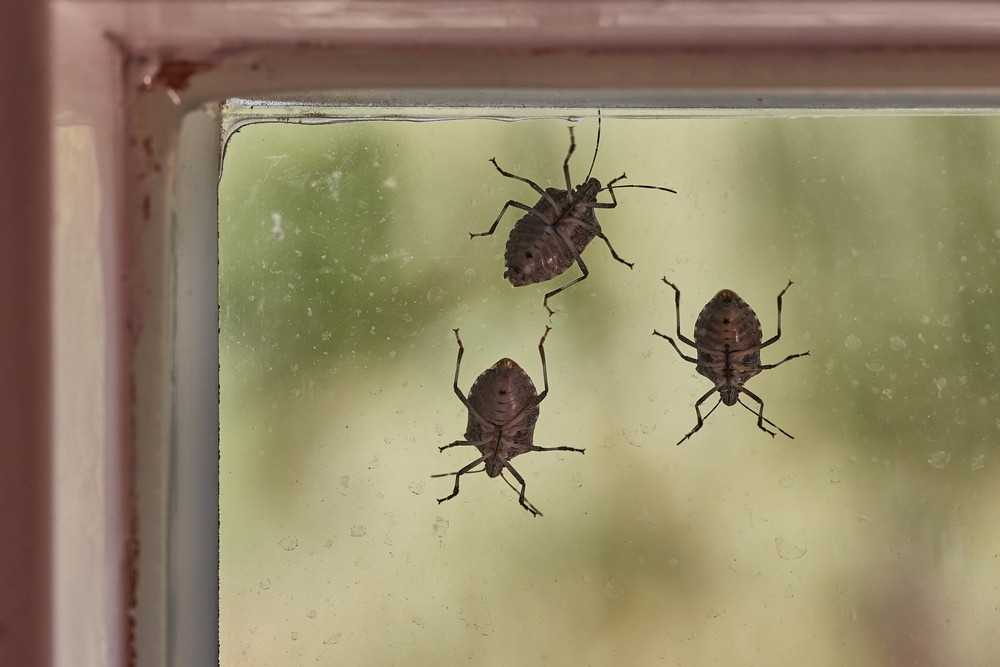Your motorhome is more than just a vehicle; it’s your ticket to adventure, a cosy home on wheels,...
Have you heard about stink bugs before? Not everyone has, it seems, but once you’ve had an infestation you’ll never forget them, that’s for sure! They arrive in their droves and take up residence where they see fit - much to the annoyance of many a motorhome owner who has to evict them. Let’s find out more about these creatures, and see how best to get rid of them if they do ever decide to move into your motorhome, en masse.
What are stink bugs?
Stink bugs are little shield-shaped insects, known for emitting a really pungent odour as a defence mechanism when they are disturbed or squished. Native to Asia, several species have now spread to other parts of the world, including Europe and North America, where they are often regarded as agricultural pests. The brown marmorated stink bug, in particular, poses a threat to certain crops such as apples and tomatoes, by feeding on their juices and causing deformities in the plant.
From autumn, and certainly throughout the colder months, the bugs tend to seek shelter, becoming a nuisance to motorhome and caravan owners alike. They are clever insects, seeming to hunt out any gap or opening to enter by, and then any nook or cranny to reside in, and they can flatten themselves really thin in order to crawl through really small gaps.
Although they don’t pose any direct harm to humans or pets, no-one wants insects crawling all over their living space. Their smell is definitely unpleasant, too, and they can be pretty difficult to remove.
Excellent.

So what do they do in a motorhome?
Wreak havoc, is the answer to that! We’ve seen reports of people having to remove hundreds of them in a day, and then having to do the same all over again for many days on end! Others have spoken of infestations of ‘biblical proportions’, which obviously doesn’t sound ideal. Their numbers are certainly on the rise, though, so even if you’ve not had them before, you do need to be on the lookout this year, especially if you’re travelling abroad. Don’t say we didn’t warn you!
They are strong flyers, once they reach adulthood, and they crawl too (quite slowly, thankfully) - folding their wings on top of their body when they land. They can live for around 8 months, so if you don’t get rid of them, the little rotters will be with you for quite some time. And they will procreate, too - they can lay up to 400 eggs in a lifetime.
Oh, and if the smell wasn’t enough - and we’re coming to the issue of the smell in a bit, don’t worry - they also leave wet ‘droppings’ behind. Lots of them. So, you might want to rethink the 'five second rule’ if you drop any food on the floor.
Delightful.
How to get rid of them!
The good news is, once you’ve got them all out, you should hopefully be free of them - providing you follow the guidance below on preventing them from being able to get back in again.
I don’t know how you’re feeling so far, but I’m itching a bit as I’m writing this…

Right, let’s find out how to get rid of them!
1. First, work out where they are
They will hide, and hide well! Pesky little things, they are…
Some of them will be crawling brazenly all over your worktops, no doubt in search of some juicy tomatoes, but some will be staked out, camouflage-style, in places you didn’t even realise existed in your motorhome. You’ll need to look in all the storage areas, behind the curtains and inside any covers, fabrics and linings/hems of your upholstery and bedding. Lift up the mattresses and seating cushions, clean everything out of the cupboards and shelves, and take accessible covers and grills off of things like the air con unit.
They are often attracted to light, so if you strip the motorhome as bare as you can, and then put a camping light on the floor or a table when it’s getting dark, with some sticky tape near it for catching insects on, you might draw some of the more hidden ones out of their hiding places.
2. Don’t squash them, whatever you do!
Not only do they stink when squashed, but the pheromones they release in the act of spraying attracts more of them! The release of the smell is a defence mechanism - a bit like the action a skunk takes, perhaps - and it is quite something to behold. For some people, it does actually smell like a skunk let one off. For many, it smells like burning rubber, or ammonia. For others still, weirdly, it smells strongly of coriander. Perhaps it depends on your own sense of smell and olfactory capabilities. Regardless, you really don’t want that stench in your motorhome as it lingers for ages apparently.
So we’re clear on that one - no squishing.
3. Get your tools at the ready
In the first instance, it seems that using a vacuum cleaner to hoover them up is your best bet - but you need to do it gently as if they feel they are being attacked they will go into the aforementioned skunk mode.
When you’ve got a good amount captured, empty the container or bag a really long distance away from your motorhome, into a sealed plastic bag for disposal, or into some soapy water to kill them quickly. If you just release them, they will likely come straight back. You have been warned!
If you’ve got an infestation that you can’t control, then you might need to get in a pest control professional, or failing that use bed bug spray or an insectide. Make sure you air the motorhome really well after using any of these, and follow the instructions carefully. Bug bombs might also work, and apparently spraying them directly with water containing washing-up liquid can also help.
4. Focus on stopping them from both getting in, and then staying put …
Look for gaps around the doors and windows and any cracks, and also check the seals. Fill any gaps etc with sealant or caulk. That’s the best way to prevent them gaining access that you might otherwise have missed.
Don’t park up too close to plants, trees and bushes. Get rid of your rubbish quickly, and keep both the internal and external areas of your motorhome really clean.
Unfortunately they often come in via the vents - some people have stated that they caught them one by one this way, as they dropped through! Hopefully you’ve got nothing better to be doing if this is your plan as it will take some time, but if you do want to catch them individually, have a bowl of soapy water ready for them to drop into…
Stink bugs dislike vinegar, citrus fruits and quite a few essential oils such as peppermint, lavender, clove and lemongrass, so you could dot these around or (safely) burn candles with these oils in. Some people have also said that using moth balls worked well for them, so you could dot these around the motorhome.
In terms of general cleaning, it’s important to keep surfaces such as the table and worktops disinfected - they won’t like the smell much.
It might seem odd, but using dryer sheets (the ones you put in the tumble dryer) in your motorhome can seemingly help. Use them by rubbing them over the windows, doors and external holes, vents and gaps, as well as hanging them up inside by pegs. The oils on the sheets seem to put the stink bugs off from entering, or at least staying put.

So there we go! Hopefully that has given you lots of information to help you, should you ever be invaded by the eponymous little bug that quite frankly, causes a big old stink wherever it goes…
Good luck!







